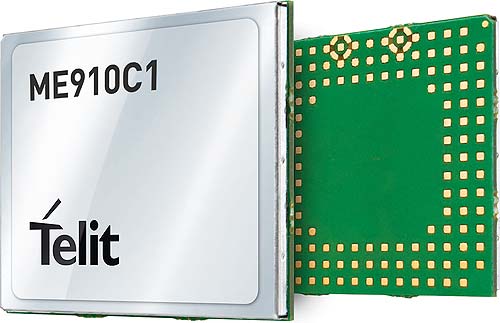 Choosing the right connectivity technology is one of the most critical decisions when developing an IoT system. If it does not optimally fit the application, performance loss or unnecessarily high operating costs may result. Long-term scalability may be limited – in the worst case scenario entailing a cost- and labor-intensive change. Anja Schaal, Product Sales Manager and Wireless expert, explains the advantages and disadvantages of the various technologies.
Choosing the right connectivity technology is one of the most critical decisions when developing an IoT system. If it does not optimally fit the application, performance loss or unnecessarily high operating costs may result. Long-term scalability may be limited – in the worst case scenario entailing a cost- and labor-intensive change. Anja Schaal, Product Sales Manager and Wireless expert, explains the advantages and disadvantages of the various technologies.
According to Machina Research, there will be 1.4 billion LPWA connections by the year 2022. Deutsche Telekom quotes analysts who even predict some three billion such connections by 2023. There is one thing all the analyses agree on: LPWA technologies will take the lead in terms of connectivity for the Internet of Things. The various LPWA technologies differ in their network coverage, data rates, power consumption, security, scalability, and interoperability. None of them top-scores in every aspect, and some of the criteria also directly contradict each other. So it is essential to analyze the requirements of the specific application in advance in order to provide a sound decision-making basis for choosing the optimum technology.
License-free variants
A basic distinction is made between licensed and license-free technologies.
The best known license-free examples are SigFox and LoRa. They are above all more cost-effective than licensed technologies: The modules are cheaper, and do not need SIM cards, so there is no cost of managing and exchanging them either. Their major failing is the less than comprehensive infrastructure. It is currently being established, but that is going to take some time yet. So only licensed technologies come into question for applications that require reliable, full-coverage wireless connections.
 Narrowband IoT (NBIoT or Cat-NB1)
Narrowband IoT (NBIoT or Cat-NB1)
The technologies in the licensed spectrum offer better scalability, service quality and security features thanks to their use of the mobile communications network.
Of the two licensed LPWAN standards NBIoT and Cat-M1, NBIoT has the slowest transfer rates: less than 250 kbps for downloads, and less than 20 kbps for uploads. The bandwidth is 200 kHz. Consequently, NBIoT is primarily suitable for stationary applications with particularly high demands in terms of energy efficiency.
 Network providers in Europe and Asia (especially China and South Korea) are driving the NBIoT standard, while the USA has opted for Cat-M1. In Canada and Australia, both standards are currently supported. Deutsche Telekom is rapidly advancing full-area network coverage in Germany and elsewhere in Europe.
Network providers in Europe and Asia (especially China and South Korea) are driving the NBIoT standard, while the USA has opted for Cat-M1. In Canada and Australia, both standards are currently supported. Deutsche Telekom is rapidly advancing full-area network coverage in Germany and elsewhere in Europe.
In mid-2017 it launched two NBIoT starter packs onto the market. It completed its setup operations in the Netherlands in May 2017, meaning the country has become the first in the world to have a full-coverage NBIoT network. In the USA, T-Mobile will be starting support for NBIoT in 2018.
Modules on offer for NBIoT applications include the Telit NE910C1. It combines maximum energy efficiency with highly reliable network coverage, including inside buildings. That makes it suitable for smart metering, security, point of sale, and medical applications.
 Thanks to its xE910 form factor (28 × 28mm2), it can quite easily replace other modules of the same form factor in existing applications. Telit’s NE866B1 module offers quite similar features. With an even smaller xE866 form factor (19 × 15 mm2), it is ideal for use in very small devices.
Thanks to its xE910 form factor (28 × 28mm2), it can quite easily replace other modules of the same form factor in existing applications. Telit’s NE866B1 module offers quite similar features. With an even smaller xE866 form factor (19 × 15 mm2), it is ideal for use in very small devices.
LTE Category M1, Cat M1 or LTE-M for short
Compared to NBIoT, the Cat M1 standard features higher data transfer rates of up to 1 Mbps. Also as opposed to NBIoT, Cat M1 supports Voice Over LTE (VoLTE) for applications involving voice transmission. Cat M1 also enables handover from one wireless cell to the next, making it suitable for mobile and moving applications such as telematics and fleet management, provided the data volume is within the transfer rate.
Telit also has IoT modules in its portfolio for Cat M1. The ME910C1 and the ME866A1 have the same form factors as the NBIoT modules. This means the right module can be installed in a device depending on the country and supported wireless technology without need for any costly redesign. The special thing about the ME910C1 is that it is a combined Cat M1 and NBIoT solution. It is available as a worldwide version or as a single version for Europe, Australia and Japan.
 The Telit family concept
The Telit family concept
Unified design, global applicability – that is the concept behind all the modules in the xE910 and xE866 series from Telit. The members of the xE910 family support different technologies, data rates and mobile communications standards such as GSM/GPRS, UMTS/HSPA+, 1xRTT, EV-DO, as well as LTE for various categories (Cat. 1,3,4, NB1 or M1). This provides users with the necessary flexibility for M2M products, as well as easy migration from 2G to 3G and to 4G. All the models are based on an identical Land Grid Array (LGA) form factor with dimensions of just 28.2 × 28.2mm2.
The highly compact modules of the xE866 family in the dimensions 19 × 15mm2 cover the GSM/GPRS, UMTS/HSDPA, LTE and LoRa standards in combination with Bluetooth Low Energy.
LPWAN basics
Low-power wide-area networks (LPWAN) are wireless communications networks which were developed in order to close the gap between cellular technologies and short-range networks such as Bluetooth and WiFi. Because for IoT applications the former are too expensive, and the latter are too energy-intensive and too restricted in transmission, especially inside buildings. By contrast, LPWAN networks carry low bit rates over long distances. This makes them ideal for applications such as smart metering, industrial monitoring and control, and smart cities. As their data rate is limited, they need significantly less power than other wireless wide-area networks (W-WAN), and are also suitable for battery-powered applications. Licensed (Narrowband IoT, Cat-M1) and unlicensed (LoRa, SigFox etc.) LPWAN technologies are available.
Author: Anja Schaal, Product Sales Manager
Rutronik | www.rutronik.com
![]()



